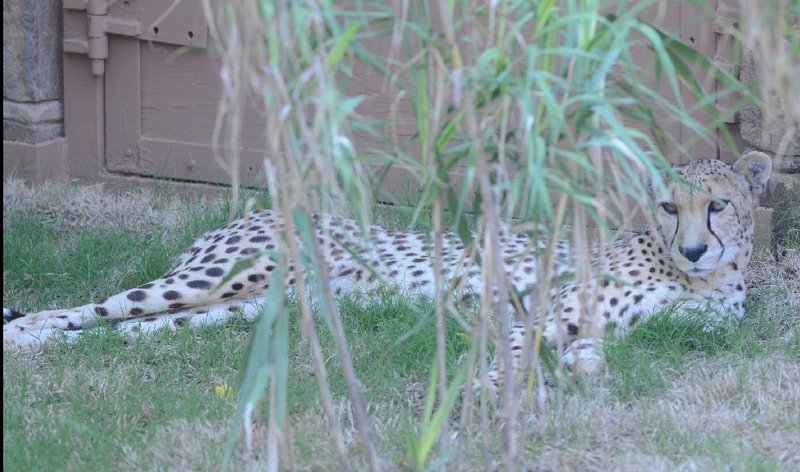LITTLE ROCK — The Little Rock Zoo’s origins date back to the humblest of beginnings in 1926 with its first modest exhibits featuring a timber wolf and a circus-trained bear.
But when it comes to expanding and improving its offerings, in the past year, the zoo has been on the fast track with the opening of two major additions. In spring 2011, the popular new Laura P. Nichols Penguin Pointe exhibit debuted. And the zoo is now racing forward with another new exhibit featuring cheetahs.
A grand opening of the new Laura P. Nichols Cheetah Outpost will be held at 10:30 a.m. Saturday, with a special preview being held from 4 to 6 p.m. Friday for zoo members. Grand-opening events Saturday will include a 2 p.m. presentation in the education building by Anne Schmidt-Kuentzel, research geneticist and assistant director for animal health and research at the Cheetah Conservation Fund.
The exhibit, which makes up a large part of the zoo’s African Savannah area, debuts with two cheetahs: 11-year-old Zazi and her 18-month-old daughter Maggie. They arrived at the zoo in early June. There is room for growth with the exhibit designed to accommodate up to five cheetahs and also allow for breeding.
The pair are acclimating well, says Susan Altrui, the zoo’s director of marketing and development.
“So far, so good,” she says, adding that keepers are slowly moving the pair from the backyard into the front. “The key is to get them on a regular schedule of when they go out every day and when they come in to eat.”
And, she adds, these exotic cats are not unlike domesticated house cats.
“They spend a lot of time catnapping; they sleep about 20 to 22 hours a day,” Altrui says.
When awake, they also like to play, as well.
“They like the Kong extra-large dog toys,” Altrui says, adding that the zoo is also planning to add a chaser device similar to those used with greyhound racing dogs, which may be used at times to encourage the cheetahs to show visitors how quickly they can get up and go.
CAT CONSERVATION
The African Outpost exhibit has also been renovated as a part of the new cheetah exhibit and includes new indoor habitats for the zoo’s naked mole rats and some African reptiles.
The long, linear, cheetah exhibit includes a front and back yard for the cheetahs and two new observation decks for viewing the animals — which can, in short bursts, reach speeds of up to 70 mph. In addition to their outdoor habitat, the exhibit includes an indoor, air-conditioned area where visitors can learn about the plight of the wild cheetah and the Cheetah Conservation Fund’s efforts to save the species.
The Conservation Fund estimates that in 1900, more than 100,000 cheetahs roamed in at least 44 countries throughout Africa and Asia. Today, the animal has vanished in more than 20 countries and only about 10,000 cheetahs remain, found mostly in small populations in 23 to 26 countries in Africa and fewer than 100 in Iran.
Prior to arriving in Little Rock, Zazi and Maggie were with the Smithsonian Conservation Biology Institute in Front Royal, Va. The institute, which works to conserve threatened species and train future generations of conservationists, promotes conservation biology programs at the National Zoo in Washington and at research stations and training sites out in the field around the world.
In addition to $300,000 in funding from the Arkansasbased Laura P. Nichols Foundation — named for the late supporter of the zoo — the cheetah exhibit was also funded through $50,000 in private donations raised through the Arkansas Zoological Foundation and $400,000 through the 2009 refinancing of park bonds by Little Rock.
Weekend, Pages 26 on 07/05/2012
